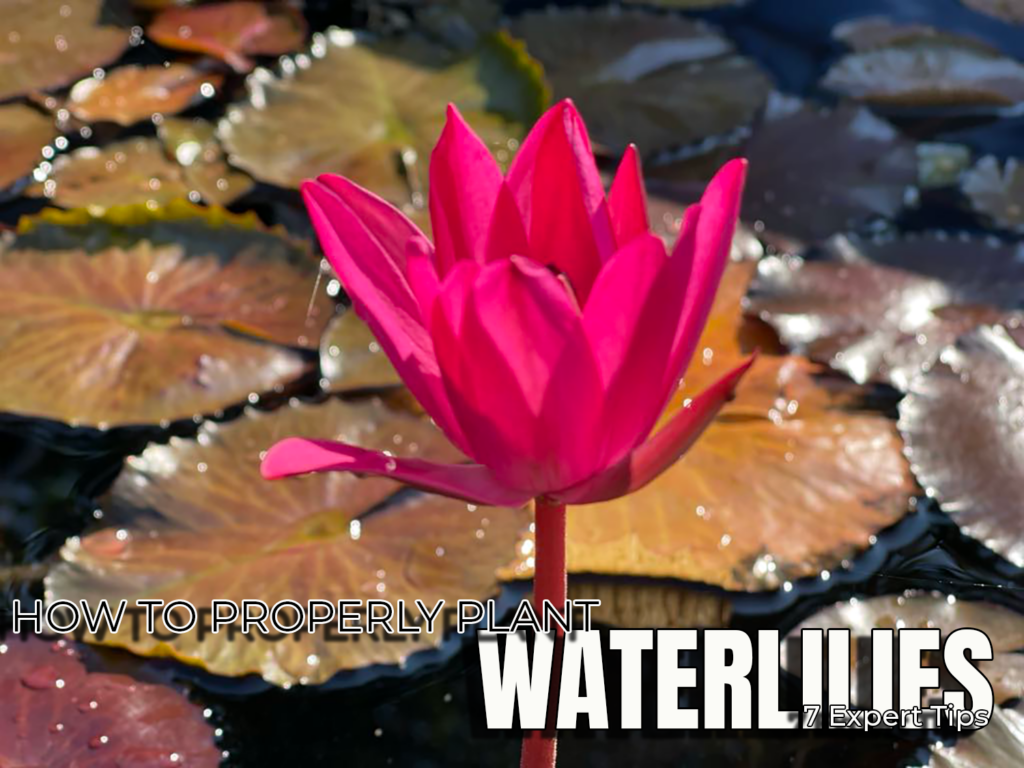
How to Plant a Waterlily in New Jersey Without Mistakes?
Waterlilies are the crown jewel of any pond, adding color, shade, and natural beauty. However, many beginners struggle to grow them successfully due to improper planting techniques. If you want to plant a waterlily in New Jersey and enjoy lush, vibrant blooms all season long, you’ll need to avoid some common pitfalls. Let’s dive into the biggest mistakes people make and how you can ensure success.
1. Using the Wrong Soil
One of the most common mistakes when people plant a waterlily in New Jersey is using standard potting soil. This type of soil contains organic material, such as peat moss or perlite, which will float and make your pond murky. Worse, fertilizers in commercial potting mixes can release excess nutrients into the water, leading to unwanted algae growth.
What to Use Instead:
✔ Heavy clay-based soil or aquatic planting media.
✔ Topsoil without organic additives.
🚫
Avoid: Lightweight potting mixes, peat moss, perlite, or soils with fertilizers.
Using the right soil helps keep the waterlily anchored and provides the necessary nutrients for strong root development.
2. Planting at the Wrong Depth
Waterlilies need to be planted at the right depth to ensure healthy growth. If placed too deep, the plant will struggle to reach the surface. If too shallow, the crown may dry out or suffer damage from extreme temperatures.
Ideal Planting Depths:
- Dwarf varieties: 6-12 inches of water.
- Hardy and tropical varieties: 12-24 inches of water.
🔹
Pro Tip: Start with a shallower depth and gradually lower the plant as new leaves develop. This helps the plant acclimate and establish itself more effectively.
3. Overcrowding the Roots
Waterlilies spread their rhizomes as they grow, meaning they need ample space to flourish. Planting them in small containers or too close to other plants can restrict growth and lead to fewer flowers.
Best Planting Practices:
- Choose a wide, shallow container (12-18 inches in diameter).
- Plant only one waterlily per pot to prevent overcrowding.
- If planting directly in the pond, space them at least 2-3 feet apart for proper growth.
By giving your waterlily enough space, you allow the rhizome to expand, promoting healthier leaves and consistent flowering.
4. Skipping Fertilization
Many assume that waterlilies can survive on the nutrients already in the pond, but they are heavy feeders. Without additional fertilization, they may develop weak leaves and fail to bloom.
How to Fertilize Waterlilies Properly:
- Use aquatic fertilizer tablets once a month during the growing season (April–September in New Jersey).
- Insert tablets deep into the soil to prevent excess nutrients from leaking into the water.
- Stop fertilizing before winter dormancy to allow the plant to transition naturally.
With proper fertilization, your waterlily will produce lush green leaves and vibrant blooms throughout the season.
5. Not Providing Enough Sunlight
If you plant a waterlily in New Jersey in a shaded area, it will struggle to produce flowers. Waterlilies thrive in
full sun, needing at least
6 hours of direct sunlight daily.
Fixing Poor Sunlight Exposure:
✅ Choose a sunny location when placing your pond.
✅ Trim back overhanging trees or structures that block sunlight.
✅ Avoid planting waterlilies in deep pond areas with excessive shade.
If your pond is naturally shaded, consider using floating planters to move waterlilies into sunnier spots.
6. Ignoring Winter Care
New Jersey winters can be harsh, and failing to prepare your waterlilies for cold temperatures can lead to plant loss. Different waterlily types require different winter care strategies:
Winterizing Hardy vs. Tropical Waterlilies
- Hardy Waterlilies: Move to the deepest part of the pond (at least 2 feet) to prevent freezing. In spring, move them back to a shallower depth.
- Tropical Waterlilies: Remove them from the pond and store indoors in a cool, damp environment (such as a bucket of water in a basement or garage).
Proper winter care ensures your plants return strong in the following growing season.
7. Failing to Maintain Your Waterlily
Once you’ve planted a waterlily in New Jersey, ongoing maintenance is key to keeping it healthy. Many pond owners neglect routine care, leading to overgrown plants, rotting leaves, and fewer flowers.
Essential Maintenance Tips:
- Remove yellowing or dead leaves regularly to prevent rot.
- Thin out overcrowded plants by dividing rhizomes every 2-3 years.
- Monitor for pests like aphids or snails, which can damage leaves and blooms.
A well-maintained waterlily will continue to flourish and provide beauty to your pond year after year.
Enjoy Thriving Waterlilies in Your New Jersey Pond!
By avoiding these common mistakes, you can successfully plant a waterlily in New Jersey and enjoy stunning, fragrant blooms all season long. Want expert advice or high-quality aquatic plants?
Contact us today for the best water gardening solutions in New Jersey!
Discover more winter tips, tricks and information located on our learning hub at
Atlantis Water Gardens!
Check out these blogs:
How Do Seasonal Changes Affect Water Features?
Why Should New Jersey Homeowners Winterize Fountainscapes?
Why Are My New Jersey Koi Fish Hanging Around My Waterfall?
